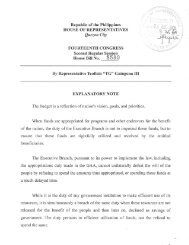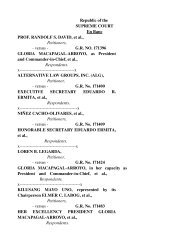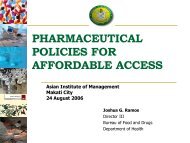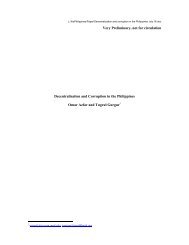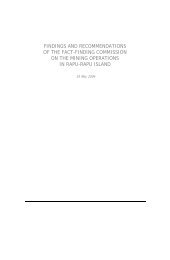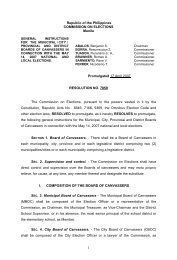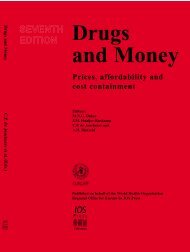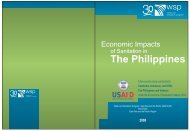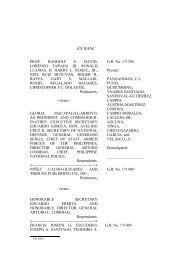FINAL REPORT - Philippine Center for Investigative Journalism
FINAL REPORT - Philippine Center for Investigative Journalism
FINAL REPORT - Philippine Center for Investigative Journalism
You also want an ePaper? Increase the reach of your titles
YUMPU automatically turns print PDFs into web optimized ePapers that Google loves.
Procurement Law and wanton wastage of scarce government<br />
resources.<br />
xxx xxx xxx<br />
Fourth, the fertilizer fund was released in the months of February to<br />
May, the traditional harvest season in the country or “gapasan”<br />
months, when fertilizers are of no use because the planting time<br />
starts in November.<br />
Fifth, ghost and questionable suppliers and deliveries haunt the<br />
fertilizer fund scam. AKAME Marketing is the identified supplier of<br />
a substantial number of transactions in the Php 728-million fertilizer<br />
fund. Process servers of the Senate failed to locate its business<br />
address indicated in its registration. Tacloban Star, a regional<br />
newspaper in Leyte and Samar, reported that its telephone number<br />
corresponds to a “gulayan” stall in Kaloocan City. Another company<br />
named Castle Rock Construction was awarded multiple contracts under<br />
the same fund. COA, in its audit memoranda, noted that “no copies of<br />
the documents from the Department of Trade and Industry was available<br />
that can show that Castle Rock Construction can engage or do business<br />
relative to the trading of fertilizers.” Witness Jose Barredo stated that<br />
FESHAN <strong>Philippine</strong>s, Inc., one of the largest suppliers, is originally a<br />
medical supplier and started to supply fertilizer only in 2004. Its<br />
office address as submitted to the DA is a non-existing address.<br />
Sixth, a document identifying the fertilizer requirements <strong>for</strong> 2003<br />
submitted by Frisco Malabanan, Director, GMA Rice Program<br />
indicated that it only needed Php 28.613 million <strong>for</strong> the entire<br />
<strong>Philippine</strong>s. If the said document is to be adopted and corresponding<br />
adjustment made, allocations will not be as huge as the Php 2.806<br />
billion released <strong>for</strong> the year 2004. This is a classic case of gross<br />
disproportion between what is needed by the farmers and wasteful<br />
utilization of the farmers’ fund.<br />
Seventh, foliar fertilizer, which is appropriate <strong>for</strong> ornamental plants<br />
and not <strong>for</strong> rice, was supplied. Technical experts invited by the<br />
Committees are one in saying that generally, rice would require solid<br />
fertilizers which include urea, ammonium sulfate, ammophos, complete<br />
fertilizers, and muriate of potash, depending on the situation of the soil.<br />
Furthermore, foliar fertilizer is advisable <strong>for</strong> use in high value crops<br />
(HVC) because it is relatively expensive if it will be applied to rice.<br />
Besides it is not effective in rice mainly because of the stature of the leaf<br />
of rice which is upright. Thus, sprayed foliar fertilizer will just slide down<br />
and could not be absorbed by the plant. The most effective way of<br />
applying these nutrients to the rice plant is by the soil.<br />
Eighth, the wrong and overpriced kind of fertilizer <strong>for</strong> rice was even<br />
diluted with water. Call it a case of “double corruption.” In the<br />
testimonies presented during the public hearings, the fertilizers<br />
overpriced by almost 1,000 % are not even pure fertilizers but<br />
159



